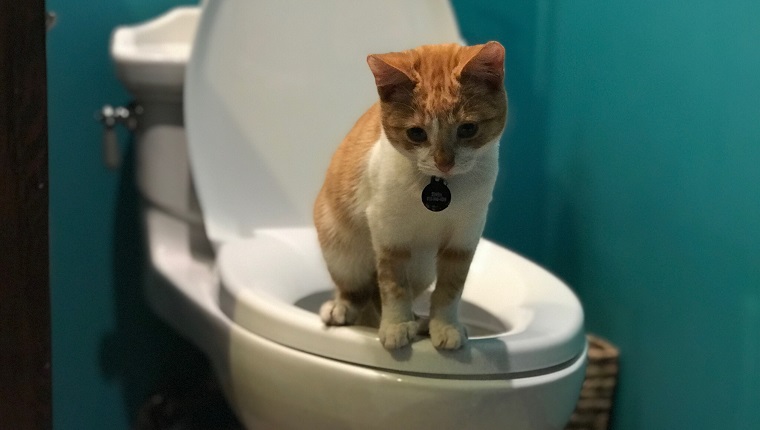The writer is making a number of good pointers on the subject of Can You Flush Cat Poop Down The Toilet? as a whole in this article in the next paragraphs.

Introduction
As feline owners, it's necessary to bear in mind how we get rid of our feline buddies' waste. While it may appear practical to purge cat poop down the bathroom, this technique can have detrimental consequences for both the setting and human health and wellness.
Alternatives to Flushing
The good news is, there are safer and a lot more liable ways to deal with feline poop. Consider the adhering to choices:
1. Scoop and Dispose in Trash
One of the most typical technique of disposing of pet cat poop is to scoop it right into a biodegradable bag and throw it in the garbage. Make certain to make use of a specialized litter scoop and throw away the waste immediately.
2. Use Biodegradable Litter
Go with biodegradable feline clutter made from products such as corn or wheat. These trashes are eco-friendly and can be securely gotten rid of in the garbage.
3. Hide in the Yard
If you have a yard, consider hiding pet cat waste in a designated area away from vegetable yards and water sources. Make certain to dig deep adequate to prevent contamination of groundwater.
4. Set Up a Pet Waste Disposal System
Invest in a pet dog waste disposal system especially developed for cat waste. These systems make use of enzymes to break down the waste, reducing smell and environmental effect.
Wellness Risks
Along with ecological problems, purging pet cat waste can additionally position wellness threats to people. Feline feces may include Toxoplasma gondii, a parasite that can cause toxoplasmosis-- a potentially serious disease, particularly for expectant women and individuals with weakened immune systems.
Ecological Impact
Purging cat poop presents unsafe pathogens and bloodsuckers into the water supply, posturing a substantial threat to water environments. These pollutants can negatively affect aquatic life and concession water quality.
Final thought
Liable family pet ownership expands past giving food and shelter-- it likewise entails proper waste administration. By refraining from flushing cat poop down the commode and going with alternative disposal approaches, we can reduce our ecological impact and protect human wellness.
Why Can’t I Flush Cat Poop?
It Spreads a Parasite
Cats are frequently infected with a parasite called toxoplasma gondii. The parasite causes an infection called toxoplasmosis. It is usually harmless to cats. The parasite only uses cat poop as a host for its eggs. Otherwise, the cat’s immune system usually keeps the infection at low enough levels to maintain its own health. But it does not stop the develop of eggs. These eggs are tiny and surprisingly tough. They may survive for a year before they begin to grow. But that’s the problem.
Our wastewater system is not designed to deal with toxoplasmosis eggs. Instead, most eggs will flush from your toilet into sewers and wastewater management plants. After the sewage is treated for many other harmful things in it, it is typically released into local rivers, lakes, or oceans. Here, the toxoplasmosis eggs can find new hosts, including starfish, crabs, otters, and many other wildlife. For many, this is a significant risk to their health. Toxoplasmosis can also end up infecting water sources that are important for agriculture, which means our deer, pigs, and sheep can get infected too.
Is There Risk to Humans?
There can be a risk to human life from flushing cat poop down the toilet. If you do so, the parasites from your cat’s poop can end up in shellfish, game animals, or livestock. If this meat is then served raw or undercooked, the people who eat it can get sick.
In fact, according to the CDC, 40 million people in the United States are infected with toxoplasma gondii. They get it from exposure to infected seafood, or from some kind of cat poop contamination, like drinking from a stream that is contaminated or touching anything that has come into contact with cat poop. That includes just cleaning a cat litter box.
Most people who get infected with these parasites will not develop any symptoms. However, for pregnant women or for those with compromised immune systems, the parasite can cause severe health problems.
How to Handle Cat Poop
The best way to handle cat poop is actually to clean the box more often. The eggs that the parasite sheds will not become active until one to five days after the cat poops. That means that if you clean daily, you’re much less likely to come into direct contact with infectious eggs.
That said, always dispose of cat poop in the garbage and not down the toilet. Wash your hands before and after you clean the litter box, and bring the bag of poop right outside to your garbage bins.
https://trenchlesssolutionsusa.com/why-cant-i-flush-cat-poop/

I was made aware of that write-up about How to Dispose of Cat Poop and Litter Without Plastic Bags from an acquaintance on our other website. Do you know somebody else who is very much interested in the subject? Feel free to share it. Thanks a lot for taking the time to read it.
Give Me A Quote!